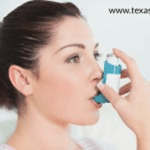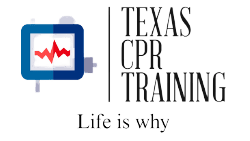
According to the Centers for Disease Control 1 in 13 people suffer from asthma which equates to 7.4 percent of adults and 8.6 percent of children. The American Academy of Allergy, Asthma & Immunology states that the majority of childhood asthmatics develop symptoms before the age of 5. In fact asthma is the leading chronic disease for children and it is the leading cause of missed school days. It is also more common in children than adults, especially in boys.
Asthma is a respiratory condition in which the airways, or bronchial tubes are always inflamed. The bronchi allow air to come in and out of the lungs. When something triggers an asthmatic the airways tighten causing coughing, wheezing, shortness of breath, and/or chest tightness. Each year asthma causes more than 14 million doctor visits and 439,000 hospital admissions.
Physical activity is often a source of asthma symptoms for both diagnosed asthmatics and for some otherwise healthy people who only experience symptoms while exercising. This type of asthma is called exercise-induced bronchoconstriction (EIB) or exercise-induced asthma (EIA). If you’ve experienced EIB or EIA symptoms talk to your doctor. They will be able to assist you in managing your symptoms to keep you moving and breathing smoothly.
Asthma attacks are also triggered by environmental factors either at home, work, or elsewhere. Inhaling mold, second hand smoke, fumes, gases, or dust is harmful to anyone but especially harmful for asthmatics. It is important to be aware of your environment because many environmental triggers can be avoided. If gone untreated asthma can be deadly. Every day ten Americans die from asthma and many of them could have avoided death with proper care and treatment.
The main objective of asthma treatment is to control the disease, asthma is a long-term condition that has no cure. Doctors work with their patients to prevent chronic symptoms such as coughing and shortness of breath. They also assist in maintaining good lung function. and prevent chronic asthma attacks. By taking in active role in your treatment and/or the treatment of your child, chronic asthma episodes can be prevented.
There are two types of asthma medications, long–term control and fast relief. Long-term control medicines assist you in reducing your airway inflammation and preventing symptoms. Fast relief (rescue) medications are used to quickly relieve symptoms as needed. The majority of asthmatics need to take long term medications to control their asthma.
Inhaled corticosteroids are a popular long-term medicine because they’re the most effective option for lasting relief of swelling and inflammation that makes the airways sensitive to specific substances. By reducing the swelling and inflammation it prevents the likelihood of an asthma attack. Inhaled corticosteroids are safe when taken as prescribed and aren’t habit forming. They can however have side effects such as thrush. Although most doctors agree that the benefits out weigh the potential risks. Other long-term control medicines include shots and medications delivered through a nebulizer.
All asthmatics need fast relief medicine to relieve asthma symptoms that flare up unexpectedly. These medications work quickly to reduce swelling in the muscles around the airways allowing air to get in and out of the lungs. Rescue medications work best when taken at the on-set of symptoms. If you take your fast relief medicine more than twice a week talk with your doctor about your asthma action plan.
It is important to know CPR, asthma can turn bad fast. Take a CPR class at Texas CPR!
American Lung Association
Asthma and Allergy Foundation of America
Learn how to Control Asthma
Medline Plus
WebMD – What is Asthma
World Health Organization
